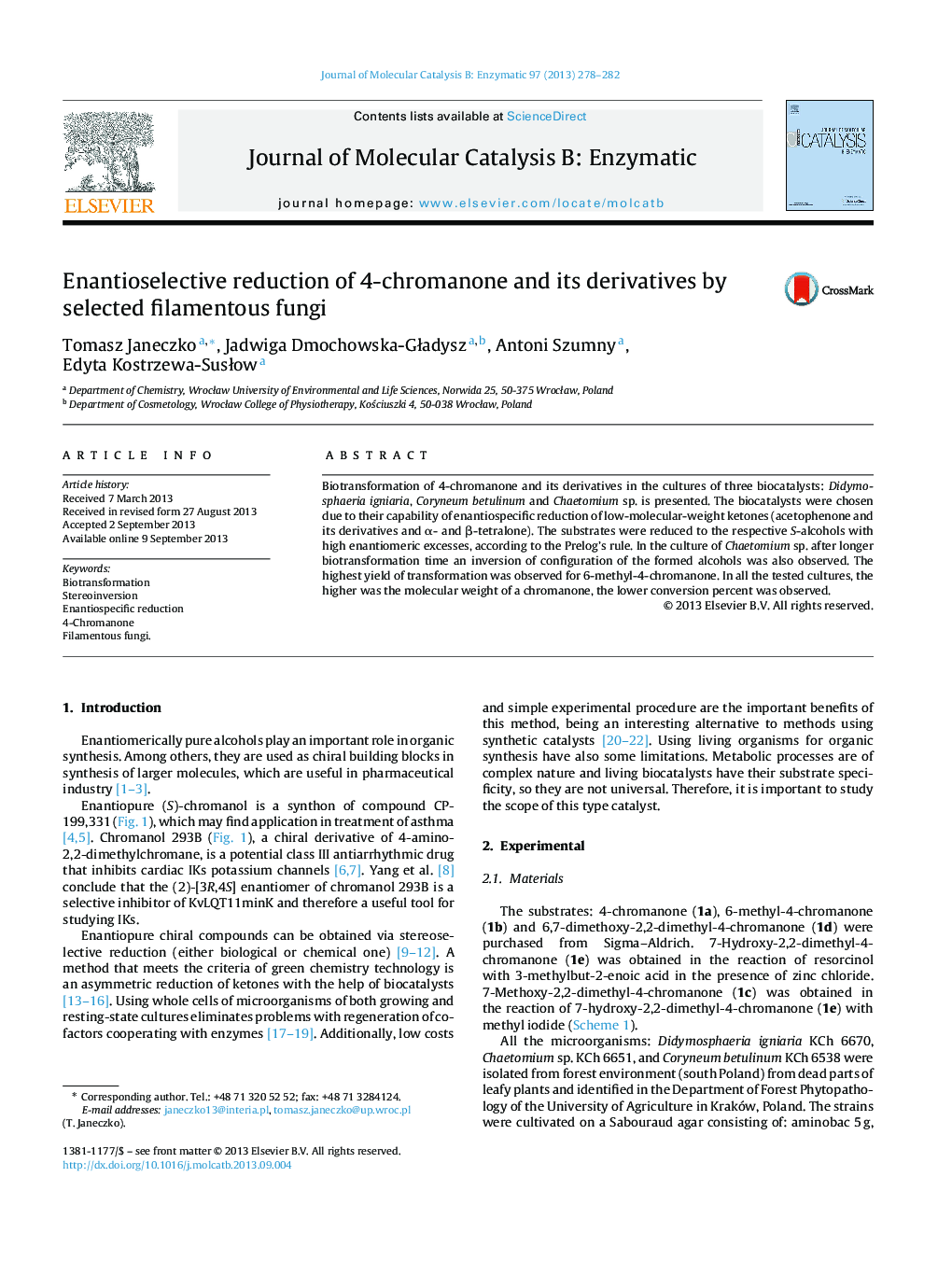| Article ID | Journal | Published Year | Pages | File Type |
|---|---|---|---|---|
| 69619 | Journal of Molecular Catalysis B: Enzymatic | 2013 | 5 Pages |
•Biotransformations of five 4-chromanones catalyzed by three filamentous fungi were presented.•The spectrum of substrate range accepted by selected biocatalysts was evaluated.•The influence of substituents size on effectiveness of microbial reduction of ketones was crucial.
Biotransformation of 4-chromanone and its derivatives in the cultures of three biocatalysts: Didymosphaeria igniaria, Coryneum betulinum and Chaetomium sp. is presented. The biocatalysts were chosen due to their capability of enantiospecific reduction of low-molecular-weight ketones (acetophenone and its derivatives and α- and β-tetralone). The substrates were reduced to the respective S-alcohols with high enantiomeric excesses, according to the Prelog's rule. In the culture of Chaetomium sp. after longer biotransformation time an inversion of configuration of the formed alcohols was also observed. The highest yield of transformation was observed for 6-methyl-4-chromanone. In all the tested cultures, the higher was the molecular weight of a chromanone, the lower conversion percent was observed.
Graphical abstractFigure optionsDownload full-size imageDownload as PowerPoint slide
